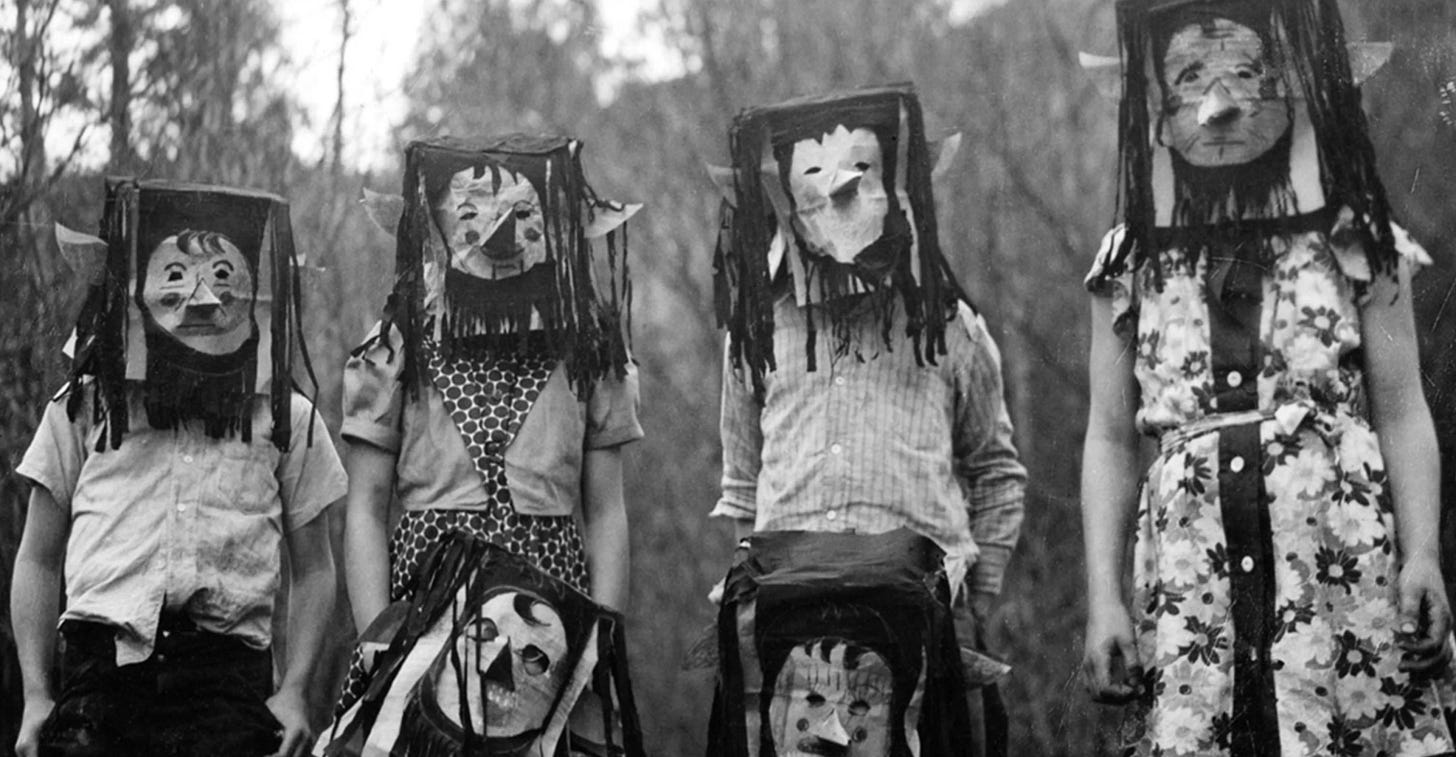Trick?
"Illusion, Michael."
We’ve discussed that trick-or-treating comes from the old traditions of guising, or going around to houses and putting on a show for food or bevies. But today, the threat of the trick doesn’t really carry any weight. Like, you’re a five-year-old Spiderman. What are you gonna do, cry all over my doormat? Take this Fun Size Snickers and get outta here.
But the threat of Halloween tricks used to be very real.
It seems a lot of trick-or-treat history comes from Canada. The earliest records of Halloween guising in North America date back to 1898 in British Columbia. “Trick or treat!” as an interjection was first recorded in Ontario around 1917. (Variations, such as “tricks or treats,” were still popular through the 1960s, as famously heard in It’s the Great Pumpkin, Charlie Brown.)
As Halloween spread across North America in the 19th century, it was largely a night of simple pranks and scares. Think jumping out from behind hay bales, stealing pumpkins from neighbors’ farms, letting pigs loose, hanging jack-o’-lanterns from ropes to make them float through the night.
But as things became more urbanized, the pranks became increasingly troublesome. The youths were committing a wide range of vandalism and mischief, including tying ropes across roadways to trip passers-by, soaping windows, turning over barrels, devastating gardens, coating chapel seats with molasses, tipping outhouses, throwing flour in people’s faces, and defacing buildings. One “prank” involved setting off pipe bombs. Yeahhh…
So, when kids began using the threat of their own misdeeds to extort candy (and sometimes money) from the town's adults, it worked.
Many attempts were made to ban Halloween, with the goal of turning the day into morally upright celebrations of citizenship and good works. But it never held because the grift was simply too good. Enterprising adults have also tried to create events that might feed some of the Halloween fun in place of trick-or-treating, but it was clear that kids wanted both, not either/or.
So, attention was turned to the parents. If they could train their children to ask for candy without enacting any retribution – and also you guys could maybe supervise them maybe? like, just spend one hour, once a year, with your kids? perhaps? – then trick-or-treat might not be such a destructive event. So a media blitz helped style the tradition into a calm, orderly event with polite asking and absolutely nothing unseemly. Candy companies saw an opportunity and jumped on board, spreading the word that trick-or-treating needed to be all candy, no tricks, ju$t ta$ty candie$. By the 1950s, it was a common, kid-friendly event in line with what we know today.
All that said, Devil’s Night (AKA Mischief Night, Cabbage Night, Goosey Night, Moving Night, Mystery Night, Mat Night, or Gate Night) is a tradition that seems hard to kill. For one night a year, all of those classic “pranks” get unleashed on certain cities across North America. However, even those damn, lawless youths have a sensible streak; it’s held on the night before Halloween, ensuring the powers that be never have a valid excuse for canceling the holiday itself.



